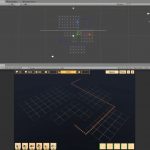Listed below are 10 of the best and most well-known projects made with the Go language. All of which is even more well-known than the language it was written.
Table of Contents
Kubernetes

Kubernetes, also known as k8s, is an open-source project created by Google for container orchestration. It is written in the Go programming language. Kubernetes makes it easier to deploy, manage, and scale applications by grouping containers into logical units for easy management and discovery. It allows containers to be scaled quickly and easily, reducing the time and complexity of managing them. Furthermore, Kubernetes can be used to automate the deployment, scaling, and management of applications.
Docker
Perhaps the best success story for proving the power of Go is through Docker. Docker is software that allows for containerization, which is an efficient way of running distributed software projects. After only one year of using this technology, it has become one of the leading methods for making software projects suitable for any extensive system.
Fedora CoreOS
CoreOS, or Red Hat project as we know it now, utilizes Docker as a means of turning Linux into a group of loosely coupled containers and is potentially a path away, which has become a necessity in Linux package management. It’s also worth mentioning that Etcd and Fleet, two fundamental services of CoreOS’, are written entirely in Go.
Gravitational Teleport
Since Go implemented SSH, it has become the go-to programming language for a great variety of networking projects. In addition to this, it has also been the basis for projects such as Gravitational Teleport, a system that enables users to access servers securely via a command line interface.
Gravitational Teleport allows users to easily and securely access their infrastructure. It is an open-source tool designed to give engineers a unified way to access Linux and Windows servers, Kubernetes clusters, databases, and DevOps applications including the AWS Management Console, CI/CD systems, version control, and monitoring dashboards, regardless of the environment. This saves users time and provides them with a comprehensive and secure system for accessing their infrastructure.
CockroachDB
CockroachDB, its name being chosen solely for its resiliency, is a distributed database programmed to survive all manners of calamities, including data center failures, is written almost entirely in Go, with only a smidgen of C++ for performance-intensive core functions taken from predecessor project RocksDB.
Terraform
Terraform is a system designed for constructing IT infrastructure in the cloud or on-premises by way of files translated into code. It was drawn from the speed and power of Go in the hopes of building an even bigger and more ambitious project than HashiCorp — which is a Ruby-based tool for managing development environments and was also founded by the same creator of Vagrant.
Hugo
A static site generator that utilizes Go solely for its features’ many advantages when it comes to swiftness and efficiency is Hugo. These features include smooth HTML rendering, networking libraries, internationalization roles, as well as the capacity to position as a single platform-native binary that’s redistributable.
InfluxDB
InfluxDB is a distributed time-series database with zero external dependencies. “Time series” is referring to how InfluxDB itself is only chiefly concentrated on taking events or metrics and analyzing them in real-time.
Traefik
Traefik is written purely in Go. It is a reverse proxy, as well as a load balancer designed for network services to work with an extensive disparity of orchestration options. It generates the routes automatically needed by microservices to converse with the outside world.
Istio
Being part of the Kubernetes universe, the Istio project deals with a problem that’s understood and dealt with poorly by a lot of enterprise app environments. It is Istio that provides a programmable “service mesh,” or layer of network proxies that allow for any changes to the network to be made to be programmatical via a shared control plane.
